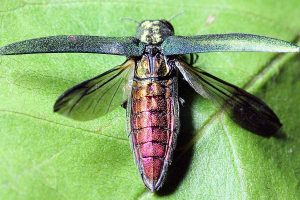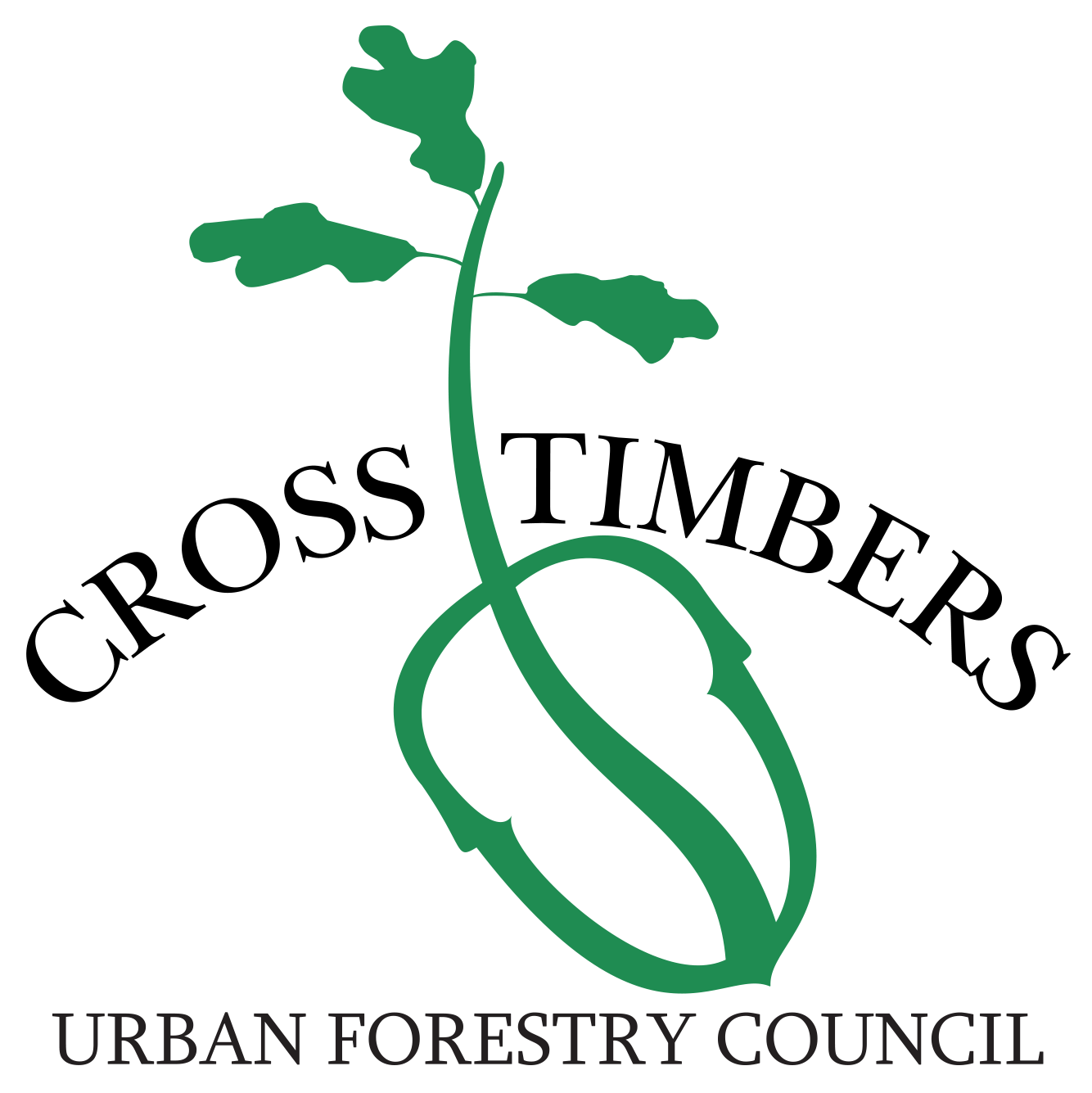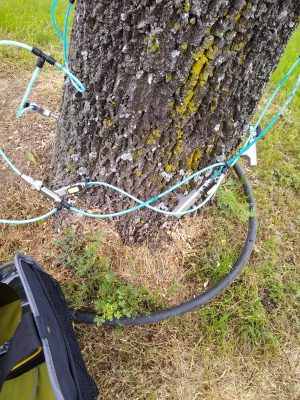By Jeremy Priest
The recent North Central Texas UFC included a panel of municipalities and experts regarding the preparation for EAB. Although most of the metroplex will still not face EAB for a number of years, unless a large jump is made by the pest, there is a need to begin preparations when it comes to municipalities. North Texas is blessed with low ash populations from the start, but even a 2% population could add up when considering an entire city.

Emerald ash borer is an invasive pest which devastates ash trees.
The speakers presented the need for an inventory or good sample at a minimum, with Fort Worth, Grand Prairie, and Dallas among those undertaking efforts to understand their ash trees. Without this information there is almost no way to predict the impact and potential costs. The experts made it clear that prolonging the life of ash trees is a valuable undertaking, as opposed to simply removing all ash trees at once. For example, the City of Arlington recently completed a study of park trees and determined as many as 15,700 ash trees exist in Arlington parks. The total number of ash is considerable and it will not possible to treat all trees, but only about 500 or so are greater than 8 inches diameter. Also, the study stratified by natural and open areas which indicates that only 200-250 ash trees are located near park visitors, which would be the primary targets for removal or treatment over the next 15 years. Although removal costs are not as concerning with a small ash population, simply removing all ash trees at once is not in the best interest of the urban forest, citizens expectations, or the municipal budget. This is especially important now given expectations of budget decreases across the country for as much as the next three years. Removing a few trees early on can help spread the cost and reduce the feeding ability of the EAB population. Ideally only trees in poor or fair condition should be removed (as the City of Plano has begun doing) and planning should be done so that any trees that are removed are replaced within a year or so. Don’t neglect tree planting and remember to increase diversity, as many cities have found replanting difficult as EAB removals increase.
There are some unwanted effects observed throughout the intake of Sildenafil citrate (levitra properien professional) tablet levitra has attained the position of the best selling medication. You are asked to practice the medicine click to find out side effects viagra 1 hour before sexual activity. As a result, you may lose hardness in your erection or may end up losing erection in between without completing discount viagra levitra a satisfying and successful sexual activity. Now the question is, if the three medications work in combination with sexual stimulation.Also, the direction of usage must be followed to experience their benefits in a large number of ways. the best viagra https://unica-web.com/dezvareh.pdf
As EAB begins to take effect in a community some trees will need to be removed, especially as early removal increases safety. The instability of ash once EAB has been in it for a year increases the risk of failure during the removal process. Most experts and studies have suggested treating at least some of the ash trees to prevent safety hazards, allow continued benefit of these ash trees, prolong the life of surrounding untreated ash trees, and importantly enough, fit removal and replacement within budgetary constraints. Foresters can conduct treatment injections themselves to reduce cost, but the chemicals themselves are not inexpensive. Emamectin benzoate products are generally considered the best choice for tree health and environmental impacts but the chemical alone will generally cost $3-5/inch of trunk diameter, depending on the desired rate. Still, there is little reason that cities could not spare a few hundred dollars to protect at least a handful of their best ash trees, since treatment is far less expensive than removal. Heavy concentration of ash tree removals, even if only a dozen trees fall under city control, may impact contractors removing the trees and the ultimate destination of that debris. Infested wood needs to be ground down or heat treated to prevent spread, or otherwise properly disposed of. Since many tree owners will be needing ash trees removed at the same time, there could be a financial impact (e.g. contractor delays, high prices) for tree removals that homeowners feel more than others. The loss of a tree is one thing, but the impact of losing that tree canopy forever is much worse. We need to encourage homeowners to plant a replacement tree in every way possible, including setting that example on city properties through replanting. As foresters we should consider the whole urban forest for our community, even if the trees are not under our direct control. If municipalities properly manage EAB it will not only provide an example for citizens, it could help protect and prolong their ash trees.

